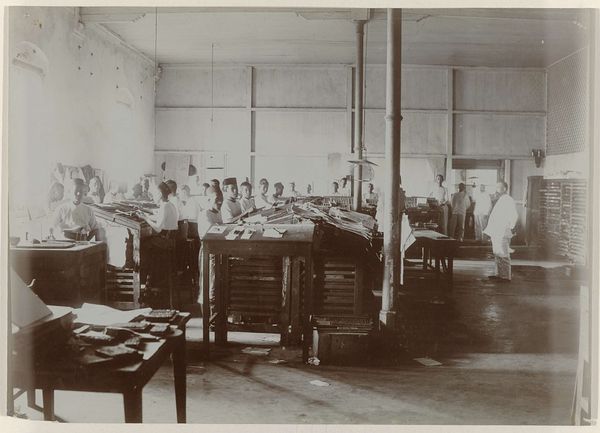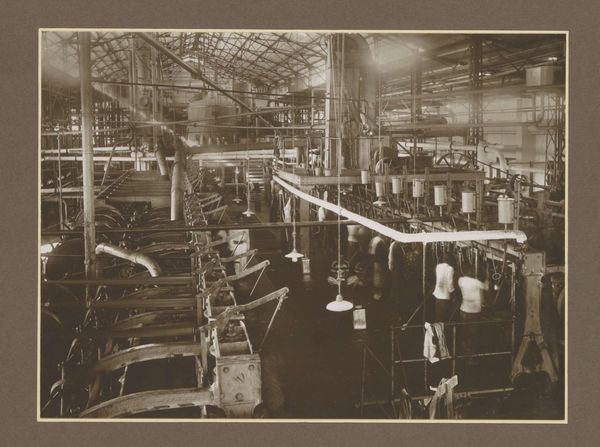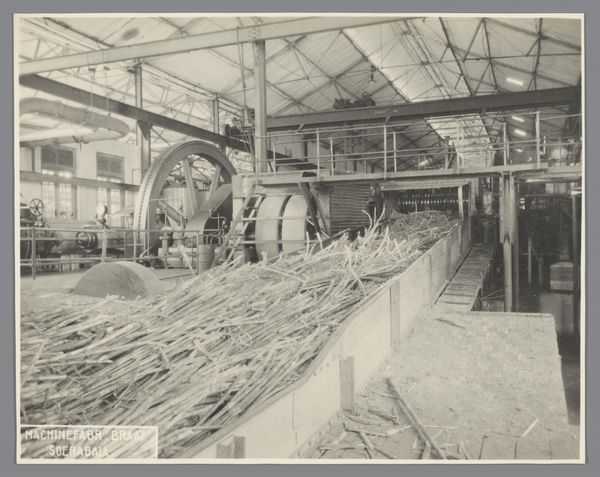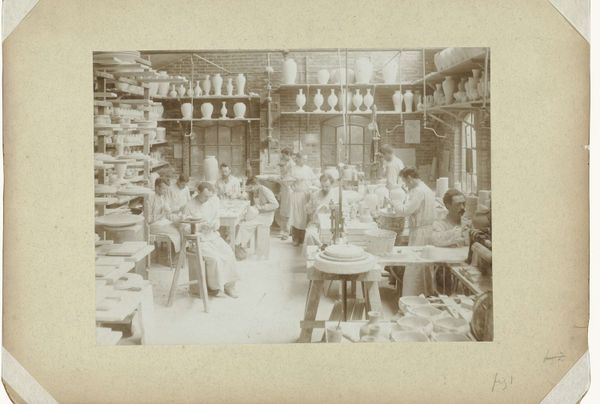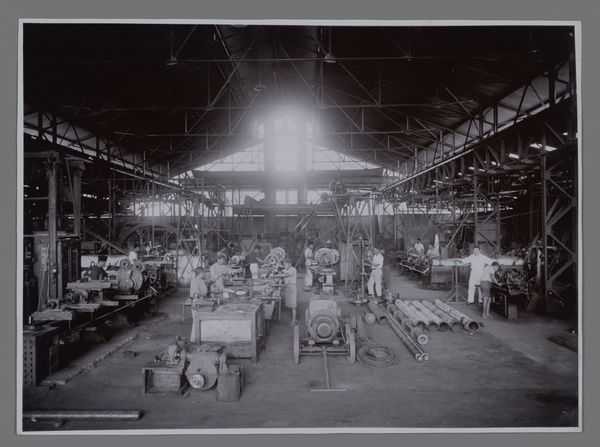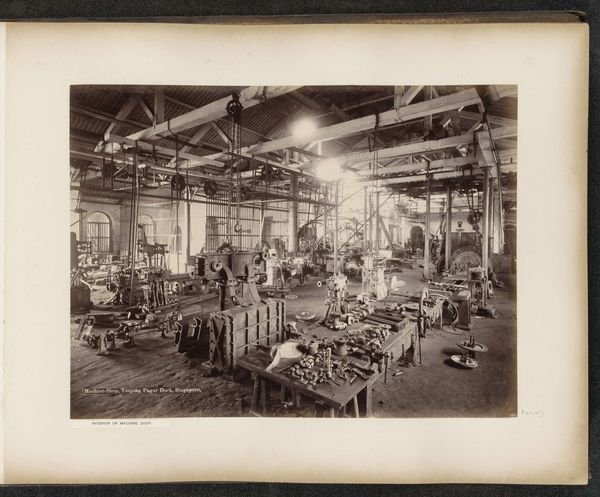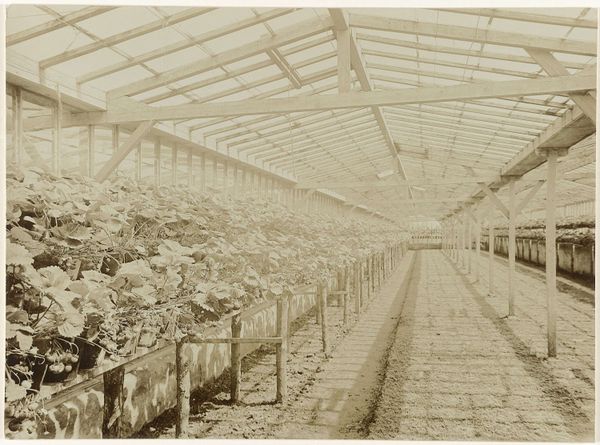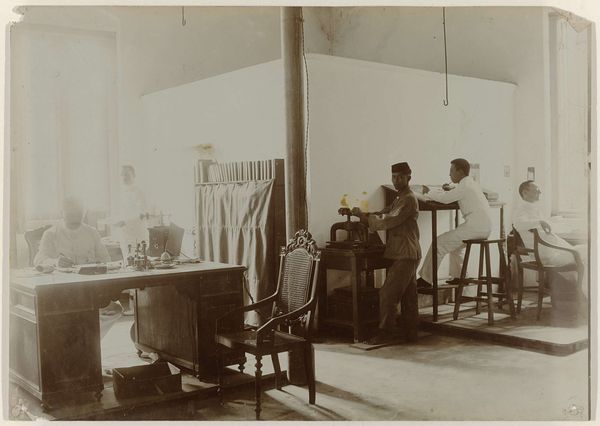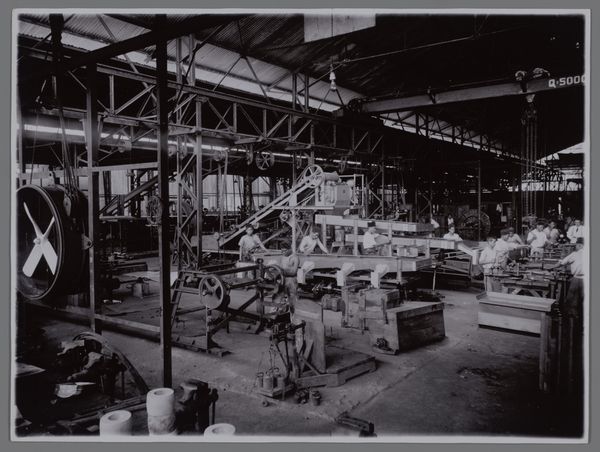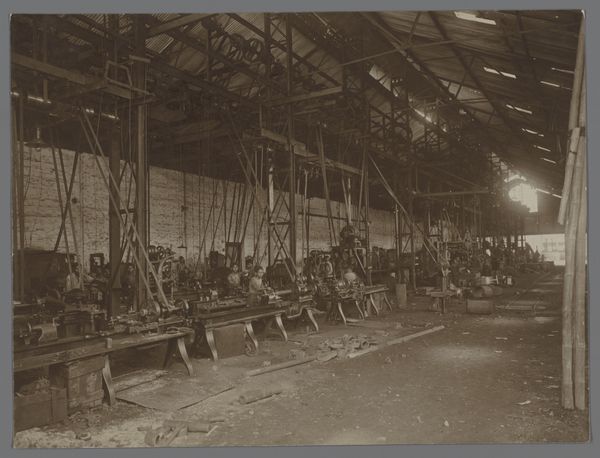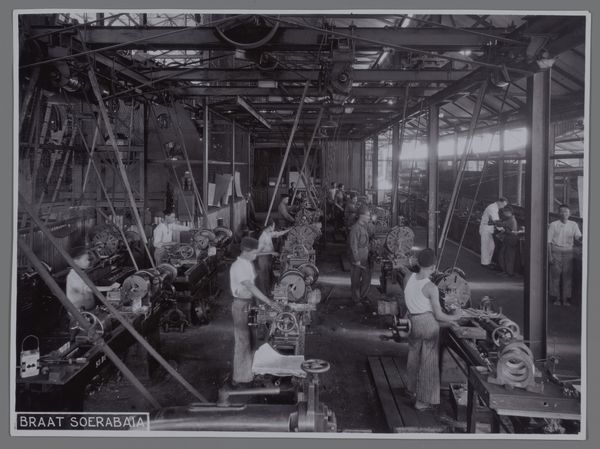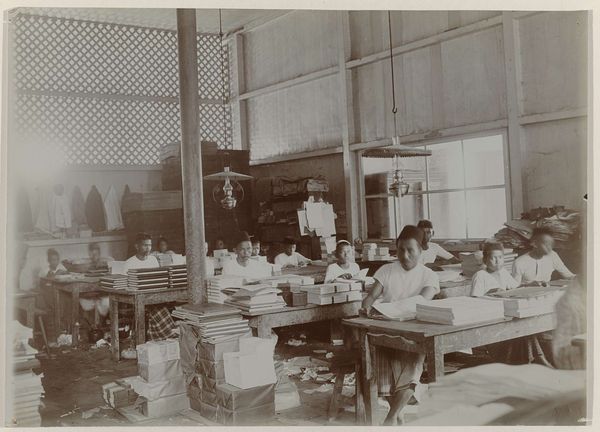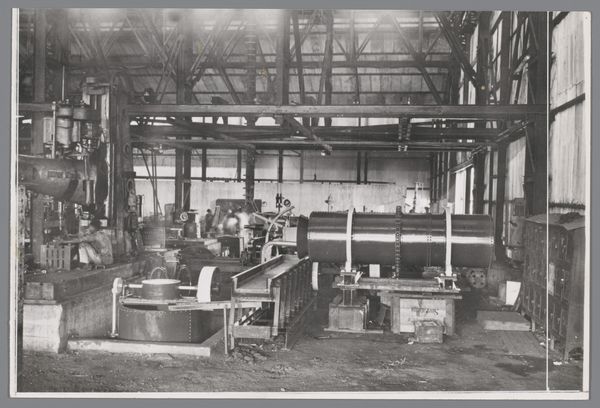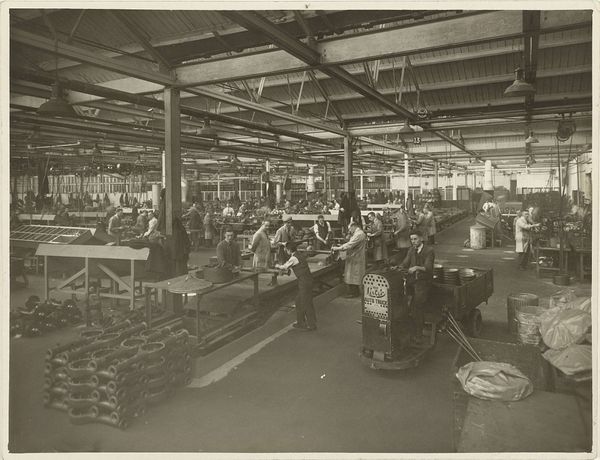
Arbeiders sorteren en verwerken wol in een fabriek in Burrawang 1890 - 1900
0:00
0:00
photography, gelatin-silver-print
#
portrait
#
16_19th-century
#
landscape
#
archive photography
#
photography
#
historical photography
#
group-portraits
#
gelatin-silver-print
#
19th century
#
genre-painting
#
naturalism
Dimensions: height 268 mm, width 348 mm
Copyright: Rijks Museum: Open Domain
Curator: This gelatin-silver print, dating from the late 19th century, is titled "Arbeiders sorteren en verwerken wol in een fabriek in Burrawang"—Workers Sorting and Processing Wool in a Factory in Burrawang. It’s credited to Charles Henry Kerry. Editor: My first impression is the texture, the stark contrast between the raw wool and the coarse wood. There’s also a curious tension—a seemingly endless horizontal plane interrupted by these rigidly upright figures. Curator: Indeed. The horizontality underscores the labor, the sorting tables forming a kind of grid. And that wool itself becomes an almost sculptural material, piled high. Semiotically, this evokes industriousness—wool being a symbol of prosperity. Editor: Precisely. But more than prosperity, wool here signifies a direct connection to the land, a foundational industry for Australia. Note the stoicism etched on their faces. They represent a collective identity shaped by toil, their individual narratives woven into a shared national story. It’s almost folkloric. Curator: Folkloric in the sense that it romanticizes a rather strenuous task, perhaps. But notice the geometry; the careful balance between light and shadow, and how Kerry uses these structural devices to create depth within the rather constrained space. The composition invites the eye to navigate through layers, finding resolution in its balance. Editor: Beyond its formal beauty, the arrangement of these workers – the slight variations in posture, the direction of their gaze, it signifies both the repetitive, grinding nature of labour, and a form of social structure and hierarchy. See the almost ghostly figures lining the upper level. It speaks volumes. Curator: I concur. Their ghostly appearance might reflect a temporal index—evidence of slow exposure times in photography, a hint to the photograph’s own material processes, a ghost in the machine. Editor: So, it seems we both appreciate the power of this composition, Charles Kerry's skill, and the historical narratives layered into the photographic document. It provides an unexpectedly rich contemplation. Curator: Yes, a surprisingly effective intersection of material representation and compositional strategy.
Comments
No comments
Be the first to comment and join the conversation on the ultimate creative platform.
